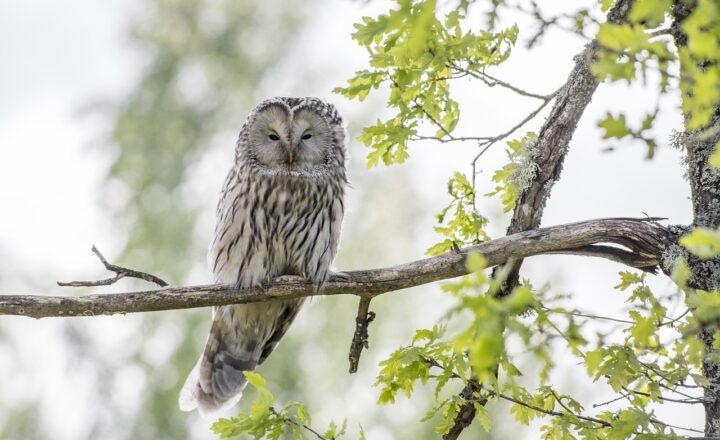Panda Facts You Didn’t Know: Surprising Insights About These Gentle Giants
November 15, 2024

Pandas are often regarded as one of the most beloved creatures on the planet. Their fluffy bodies, distinct black-and-white coloring, and gentle demeanor make them a favorite among wildlife enthusiasts and animal lovers alike. But despite their popularity, many people may not know some surprising facts about these gentle giants. In this article, we will delve deeper into the world of pandas and uncover some of the lesser-known insights about their lives, behaviors, and role in the ecosystem.
1. The Evolutionary Journey of Pandas
The giant panda (Ailuropoda melanoleuca), belonging to the bear family, has a fascinating evolutionary history. Recent studies suggest that pandas are more closely related to the red panda than they are to other bear species. This is because they share a common ancestor that diverged around 25 million years ago.
Interestingly, the ancestors of today’s giant pandas originally thrived on a carnivorous diet. Over time, they adapted to consume a largely herbivorous diet, mainly consisting of bamboo. This dietary shift played a significant role in the giant panda’s physiological evolution, including their unique digestive system, which is designed to process large quantities of bamboo.
2. Bamboo: The Staple of Their Diet
Despite being classified as carnivores, giant pandas eat bamboo almost exclusively, with up to 99% of their diet consisting of this plant. They are known to consume between 26 to 84 pounds (12 to 38 kg) of bamboo per day, depending on the availability of different bamboo species. What is particularly fascinating is that pandas have a specific preference for certain types of bamboo, which can impact their foraging behaviors.
Pandas have developed strong jaws and specialized teeth to help them break down the tough cellulose found in bamboo. However, this dietary choice comes with its own challenges, as bamboo is low in nutrients. Therefore, pandas must consume large quantities to meet their energy requirements, leading to their unique lifestyle of constantly foraging and feeding.
3. Unique Communication Styles
Giant pandas may seem solitary, but they have a rich communication system. They utilize vocalizations, facial expressions, and scent markings to interact with each other and establish their territory. Some of the most common sounds made by pandas include bleats, honks, growls, and barks.
Female pandas, in particular, use vocalizations to attract male pandas during the breeding season. Interestingly, panda cubs will also communicate with their mothers using different vocalizations, often described as a series of high-pitched squeaks and whines. This communication plays an essential role in forming social bonds and breeding success among pandas.
4. Conservation Efforts and Their Success
Pandas have long been symbols of wildlife conservation efforts. With their population declining in the past due to habitat loss and poaching, significant measures have been taken to protect them. In the 1960s, conservationists recognized the need for focused efforts to save the giant panda from extinction.
Today, thanks to these conservation programs, giant panda populations in the wild are slowly recovering. In 2016, the International Union for Conservation of Nature (IUCN) downgraded the giant panda’s status from “endangered” to “vulnerable” due to successful breeding programs and habitat restoration projects. This achievement highlights the vital importance of combining public awareness with conservation action to save endangered species.
5. The Infant Pandas: Tiny But Mighty
When a panda cub is born, it weighs about 3 to 5 ounces (about 85 to 140 grams) and is roughly the size of a cup. This small size is astonishing considering adult pandas can weigh up to 300 pounds (136 kg) or more. Panda mothers usually give birth to one or two cubs, but often only one survives in the wild due to the mother’s inability to care for both at the same time.
The first few weeks of a panda cub’s life are critical, as they are entirely dependent on their mother for warmth, nutrition, and protection. A panda mother will spend most of her time caring for her newborn, leaving only to eat or drink, creating a nurturing environment for her tiny cub. This investment in their young allows the cubs to grow and develop their social skills before venturing out alone at around 18 months of age.
6. Pandas’ Unique Physical Adaptations
Giant pandas have several unique adaptations that aid their survival in the mountainous regions of China where they primarily reside. One of the most interesting adaptations is their “pseudo-thumb,” which is an elongation of the wrist bone that functions similarly to an opposable thumb. This enables pandas to grasp bamboo more effectively as they forage.
Additionally, pandas have thick fur to keep them warm in cooler climates. Their black-and-white color patterns are thought to serve as camouflage, helping them blend into their natural habitat. The black patches around their eyes may also play a role in social signaling, helping pandas identify each other through facial recognition.
7. The Social Lives of Pandas
While giant pandas are generally perceived as solitary creatures, they can exhibit social behavior, especially among females, during the breeding season. They have home ranges that can overlap with others, and females may interact with males when in estrus. Male pandas are known to travel great distances during this period, sometimes covering over 8 kilometers (around 5 miles) to find a mate.
Social interactions among pandas are also observed at wildlife reserves, where they may share communal areas and engage in play. While they are not as socially inclined as other bear species, they certainly display a level of interaction that adds richness to their lives.
Conclusion: The Future of Giant Pandas
As we uncover the unique facts about giant pandas, it’s essential to recognize their significance in our ecosystem. They play a crucial role in their environment by promoting the growth of bamboo forests, which serve as sanctuaries for other wildlife.
With continued conservation efforts, education, and habitat protection, we can ensure the future of these gentle giants remains bright. By embracing our role in wildlife preservation, we can work together to ensure that these magnificent creatures thrive for generations to come.








